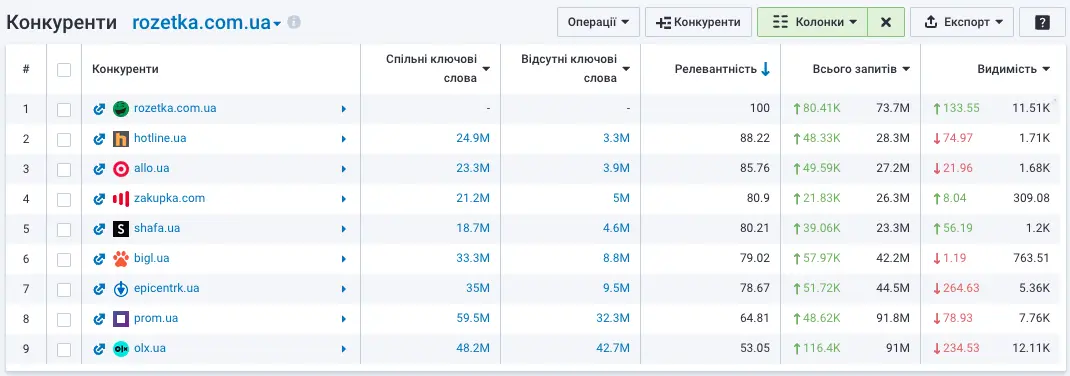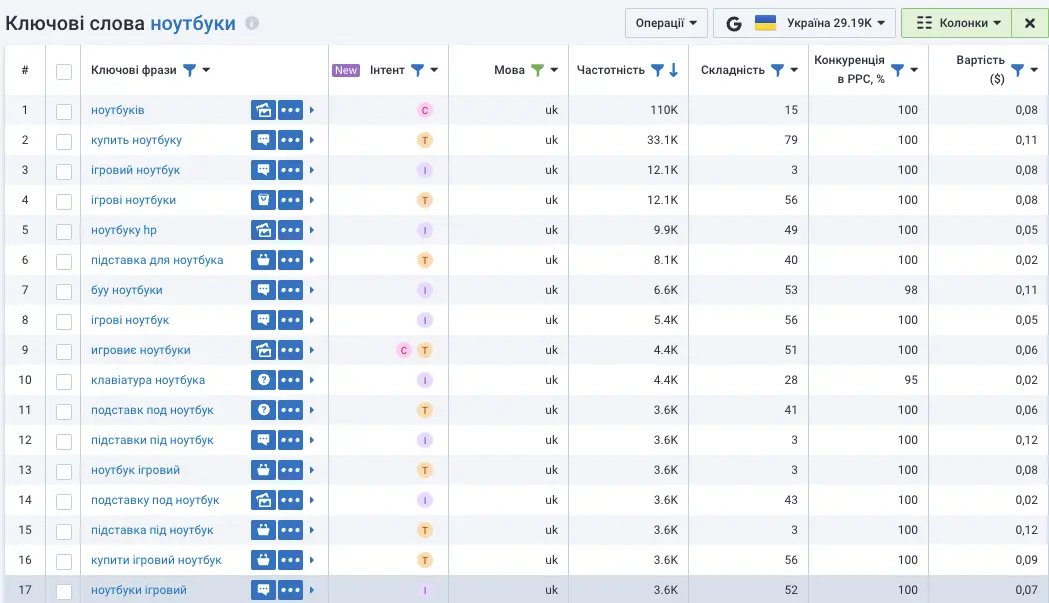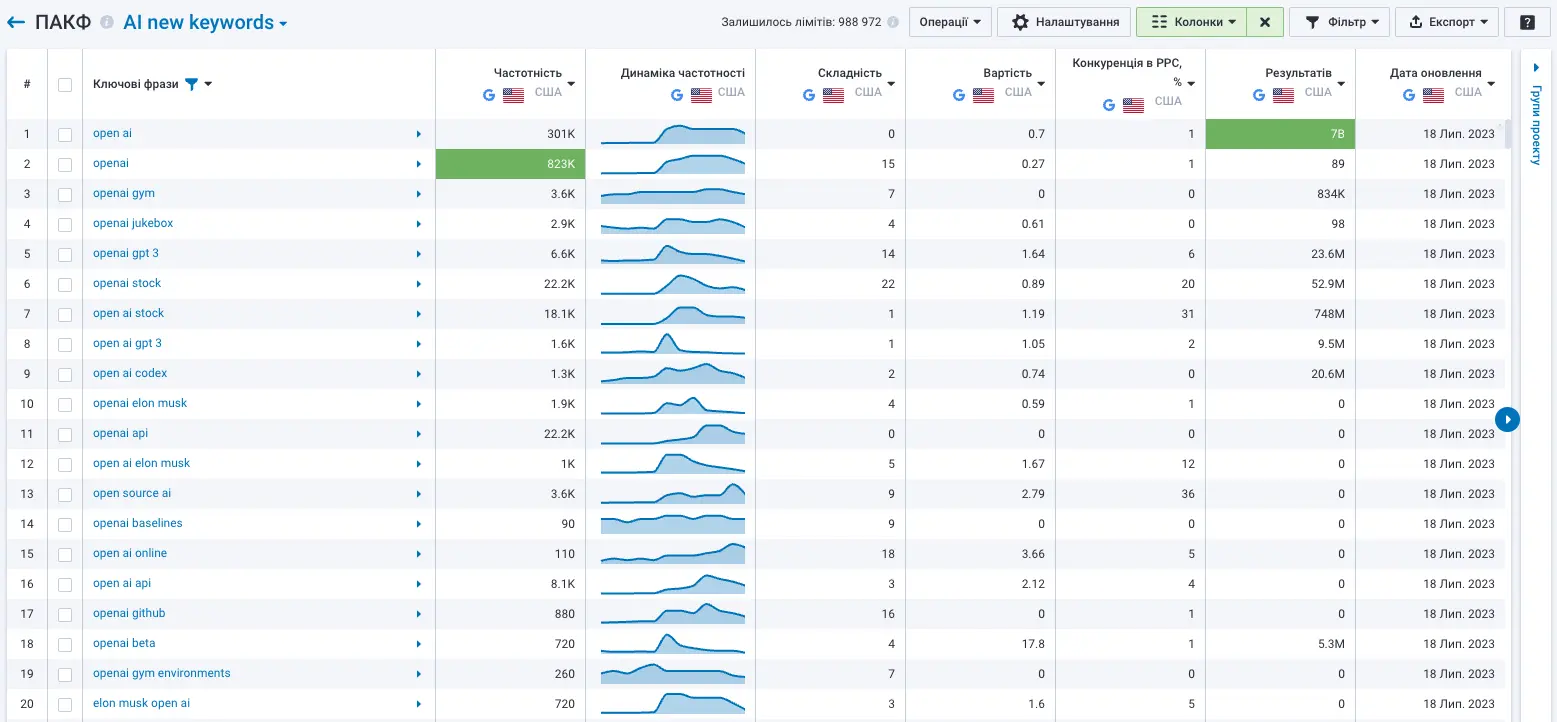Знаходьте виграшні ключові слова для просування сайту
- Оцінюйте статистику запитів в Google
- Підібрайте ключові слова для SEO та PPC
- Порівнюйте ціни за клік, частотність та складність слів









Знайдіть ключові слова саме для вашого сайту
У Serpstat найбільші бази ключових фраз та пошукових підказок у 230 країнах для Google. Це 7+ млрд ключових слів, за якими вас може знайти в пошукових системах ваша аудиторія.
Аналізуйте конкурентів
- Знаходьте ключові слова за якими ранжується будь-який домен в топ-100 пошукової видачі Google
- Досліджуйте найуспішніші ключові слова конкурентів
- Порівнюйте позиції домену, частотність та складність запитів
- Додавайте найрелевантніші ключові слова на сторінки вашого сайту та покращуйте його позиції в Google

Досліджуйте будь-яку нішу
- Вибирайте ключові слова з правильним інтентом
- Досліджуйте конкурентів за будь-якою темою в органічній та платній видачі
- Знайдіть найбільш повʼязані слова для семантичного пошуку
- Перевірте, які інші пошукові запити використовуються з вашими ключовими словами

Порівняйте до 100 000 фраз в одному звіті
- Завантажуйте популярні фрази регіону і запускайте рекламу за ними
- Підвищуйте трафік, підбираючи фрази з оптимальними показниками
- Отримуйте дані за 5 параметрами: частотність, складність, вартість, конкуренція, кількість результатів
- Інтегруйте фрази в проєкти Моніторингу позицій

Спробуйте аналіз ключових слів та ще 50 інструментів для SEO, PPC та генерації контенту
Отримайте безкоштовний доступ до всіх платних інструментів протягом 7 днів. Скасуйте в будь-який момент.
Отримати доступ безплатно






450+ відгуків

150+ відгуків

150+ відгуків

150+ відгуків



